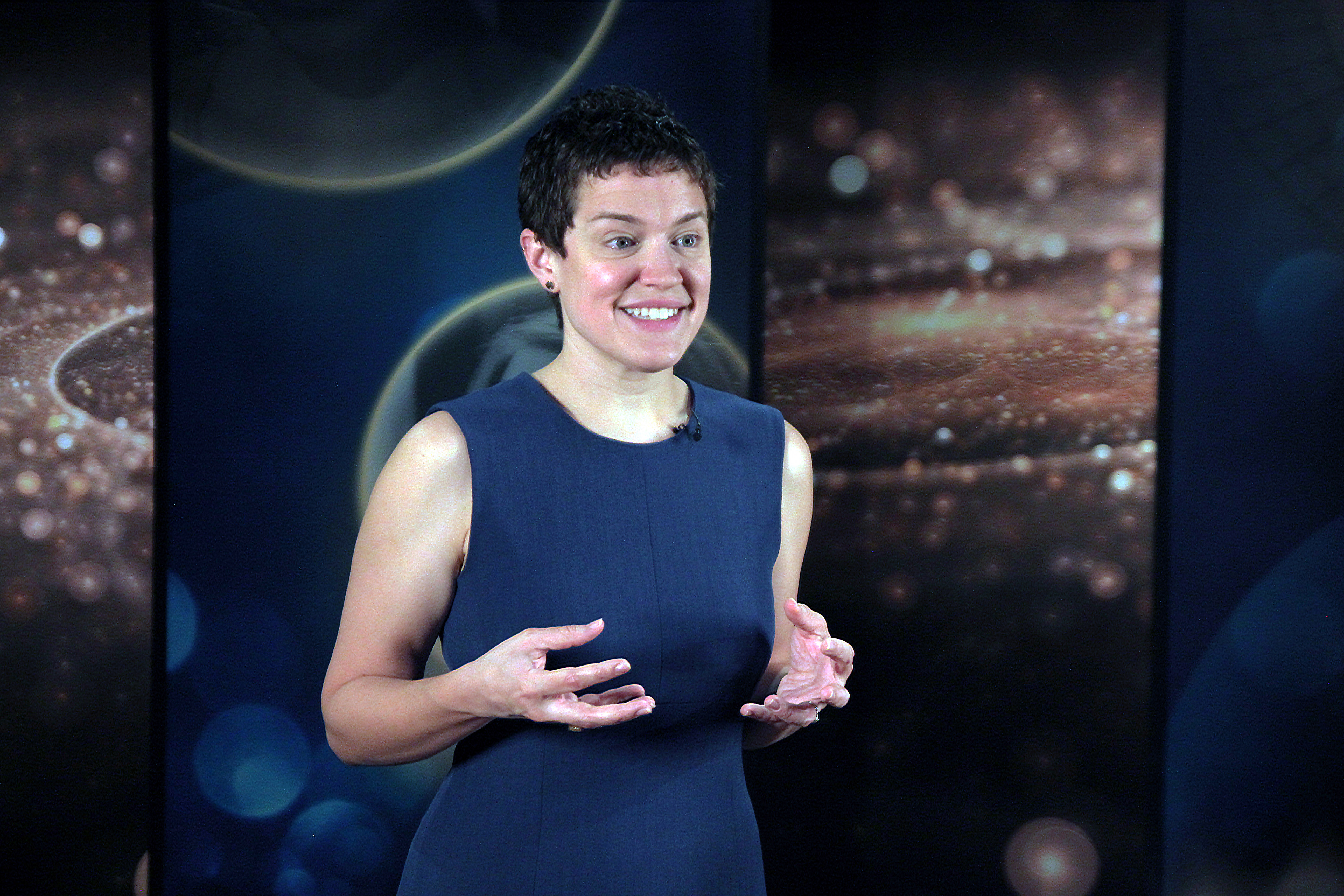UW astronomer redefines the scientific hero as part of The Great Courses – UW News

UW astronomer Emily Levesque delivers her course “Great Heroes and Discoveries of Astronomy” as part of The Great Courses, a popular online learning platform.The Teaching Company
If you look on Emily Levesque’s website, you’ll notice that one punctuation mark is prominent: the exclamation point. “Classifying massive stars with machine learning!” reads one blog post. “Gravitational waves from Thorne-Zytkow objects!” reads another.
“My default state is exclamation point,” said Levesque, an associate professor of astronomy at the University of Washington. “When we’re talking about space and we’re talking about science, how could you not?”
Now Levesque is bringing that enthusiasm to The Great Courses, an online learning platform offering classes to the general public on a range of topics, from playing guitar to decoding Egyptian hieroglyphics. Levesque’s course, “Great Heroes and Discoveries of Astronomy,” takes viewers on a tour of the biggest advancements in one of humanity’s oldest sciences — and the people behind them.
This course, which launched in February, came six months after Levesque’s popular science book on the history of observational astronomy, “The Last Stargazers.” The course consists of 24 lectures and covers the work of some scientists you may be familiar with, like Albert Einstein, Carl Sagan and Edwin Hubble, and others who might be new to you.
Those names include Henrietta Swann Leavitt. She was one of the Harvard computers, the team of women who processed astronomical data — work made famous by the film “Hidden Figures.” Leavitt’s research on measuring the distances to stars laid the groundwork for Hubble’s assertion that the universe is expanding. George Carruthers was an African American scientist who patented an ultraviolet camera and built the only telescope we’ve taken to the moon. Vera Rubin discovered dark matter; today an entire subfield of astrophysics is devoted to studying it. An enormous telescope in Chile is now named after her.
“The course pokes at our idea of what a scientific hero is,” Levesque said. “There’s this stereotype that science is done by a white man alone in a room, coming up with an idea and then just spitting it out full formed into the universe.”
This stereotype overlooks the collaborative nature of science, something Levesque’s course highlights. Breakthroughs can result from the efforts of a dozen scientists doing work that builds off each other over time, or from heroic efforts by teams of thousands. Levesque teaches a unit on the discovery of gravitational waves; the gravitational wave detector in Washington, part of the Laser Interferometer Gravitational-Wave Observatory, or LIGO, took thousands of people to build and takes thousands to maintain.
Levesque also broadens the definition of heroism to include acts like improving access to astronomy, making it more inclusive and bringing science literacy to the public.
One lecture tells the story of Frank Kameny, an astronomer in the U.S. Army Map Service. Months after he was hired in 1957, Kameny was fired when he refused to answer questions about his sexual orientation. He filed a lawsuit against the federal government, the first alleging discrimination based on sexual orientation in a U.S. court. Although it was unsuccessful, Kameny went on to become a leader in the fight for LGBTQ rights.
“It’s a really important time right now to remember that science is done by people,” said Levesque. “I don’t think understanding science — and understanding the human nature behind the discoveries we make — has ever been more important. The human side of scientists can’t be separated from the science that they do.”
The human side of scientists not only affects their work, but it also shapes narratives around science. Stories we tell about scientific heroes and discoveries are often what makes science memorable. If the stories about people are interesting, then learning about the science will follow.
Levesque remembers, as a teen, reading the book “A Man on the Moon: The Voyages of the Apollo Astronauts” by Andrew Chaiken, about the early space program. She loved learning about the astronauts and the people in mission control. She was already a “space geek,” but reading about the fun they were having, identifying with them and seeing the creative problem-solving behind the science enabled her to picture what it would be like to work in astronomy.
Stories have the power to inspire or — when the narrative is skewed or told from a singular point of view — they can send a message about who does or doesn’t belong. That’s why expanding the definition of a scientific hero beyond the stereotype is so important.
Levesque says her colleagues are a broad mix of people. They are ultramarathoners. They play in bands. They have a broad range of interests but have one thing in common: a love for space. More women are entering the field, but the low number of scientists from underrepresented groups like the Black and Latino communities shows there is still a ways to go when it comes to making astronomy more inclusive.
But if a broader range of stories are told, then more people will be able to envision themselves doing the work. And that will result in better science.
“It’s always worth reminding people when you talk about scientific heroism that you need heaps of people to do this work,” Levesque said. “Unique contributions can come from having a different perspective on a problem or other areas of expertise that a scientist can draw on. You need all sorts of talents and skill sets and enthusiastic folks who want to make science a part of their lives — that’s the ingredient, that’s the way to do science.”
Tag(s): astronomy & astrophysics • College of Arts & Sciences • Department of Astronomy • Emily Levesque




